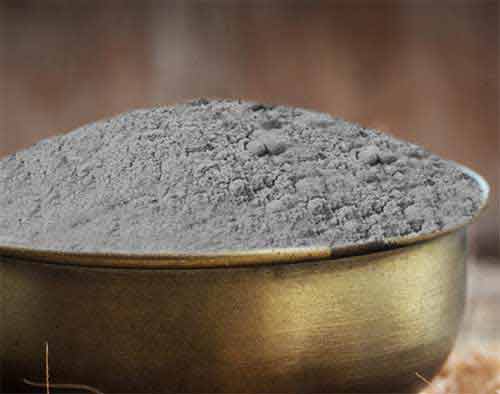Sacred Ash – Bhasma – Vibhuti stands for Shiva and is an indispensible for a Hindu devotee. There three important sources of holy ash. Vibhuti is gathered from:
- Shiva Agni
- Vaidika Agni
- Shaiva Agni
Shiva Agni
Two kinds of ashes are obtained from tShiva Agni:
- Guru Bhasma (also known as Maha Bhasma)
- Laghu Bhasma (ordinary ash).
Guru Bhasma is Shiva Himself, who is the cause and source of all auspicious fires, particularly the three sacred (shrauta) fires known as the offering fire (ahavaniya), the southern fire (dakshina)and the householder fire (garhapatya).
Laghu Bhasma (ordinary ash) is again twofold –natural and artificial. Natural bhasma arises from the Shiva Agni Bhasmam. This Shiva agni, it is said, appears on the forehead of Lord Shiva as the sacrificial fire in order to redeem the self from bondage.
Artificial bhasma is prepared from cow dung. This has its source in Shiva’s decree to His consort, to perform the fivefold act of creation, protection, dissolution, obscuration, grace. When Shakti wanted the power of Shiva’s grace for the execution of this stupendous task, Shiva produced the five elements (earth, water, fire, air and ether) from His five faces as well as the five kalas (nivritti kala, pratishtha kala, vidya kala, shanti kala, and santyatita kala). He then sent them to the earth as cows. They took their seats around Nandi, Shiva’s bull, and through Nandi, the power of the Lord entered these five cows and became sacred ash. This ash was given to Shakti as the seal of authority for performing the fivefold acts.
Vedic Fires or Vaidika Agni
The second kind of sacred ash, form Vaidika Agni, is the product of ritual offerings put into shrauta, smarta and laukika fires. The last of these three is the most ordinary and the least sanctified. Hence,it is the last resort when other kinds of ash are not available. The first two are holy as they are gathered from the rituals scripturally enjoined either by the Vedas (shruti) directly or by ethical codes (smriti).
Shaiva Agni
The Shaiva fire is intended for those who have been initiated and are advanced in their religious merit and inner purity. This ash, obtained from holy fires, is of four kinds:
- Kalpa,
- Anukalpa,
- Upakalpa
- Akalpa.
Kalpa is prepared from fresh cow dung. Then it is mixed with five bilva leaves, which are dear to Shiva. Then the five products from the cow, namely, milk, yoghurt, ghee, urine and dung are compounded in proper proportion and rolled into small balls, uttering a sacred formula. The husk of the paddy is then spread evenly on a clean spot, and the cow dung balls place on that bed. After igniting the husk, the balls are baked in fire until one gets the white ash, which is the purest.
Anukalpa is prepared from cow dung dried up in the pasture, reducing it to powder by pounding with pestle and mortar. It must then be sifted through a fine cloth and mixed with the urine of the cow. It is rolled into balls and placed on the husk. After being baked, it is taken out. In this ash, the bilva leaves are not mixed.
Upakalpa is prepared, not out from cow-dung but from the white ash resulting from the trees burnt by forest fire or from the brick kiln. This is the mixed with the five cow products. The appropriate sacred formula must be uttered at these different stages.
Akalpa is not made but is obtained from nature in places where lighting has struck, on the hill-tops, or in a certain naturally holy spots like Tiruvannamalai, Thiruneermalai and Rameshwaram.
